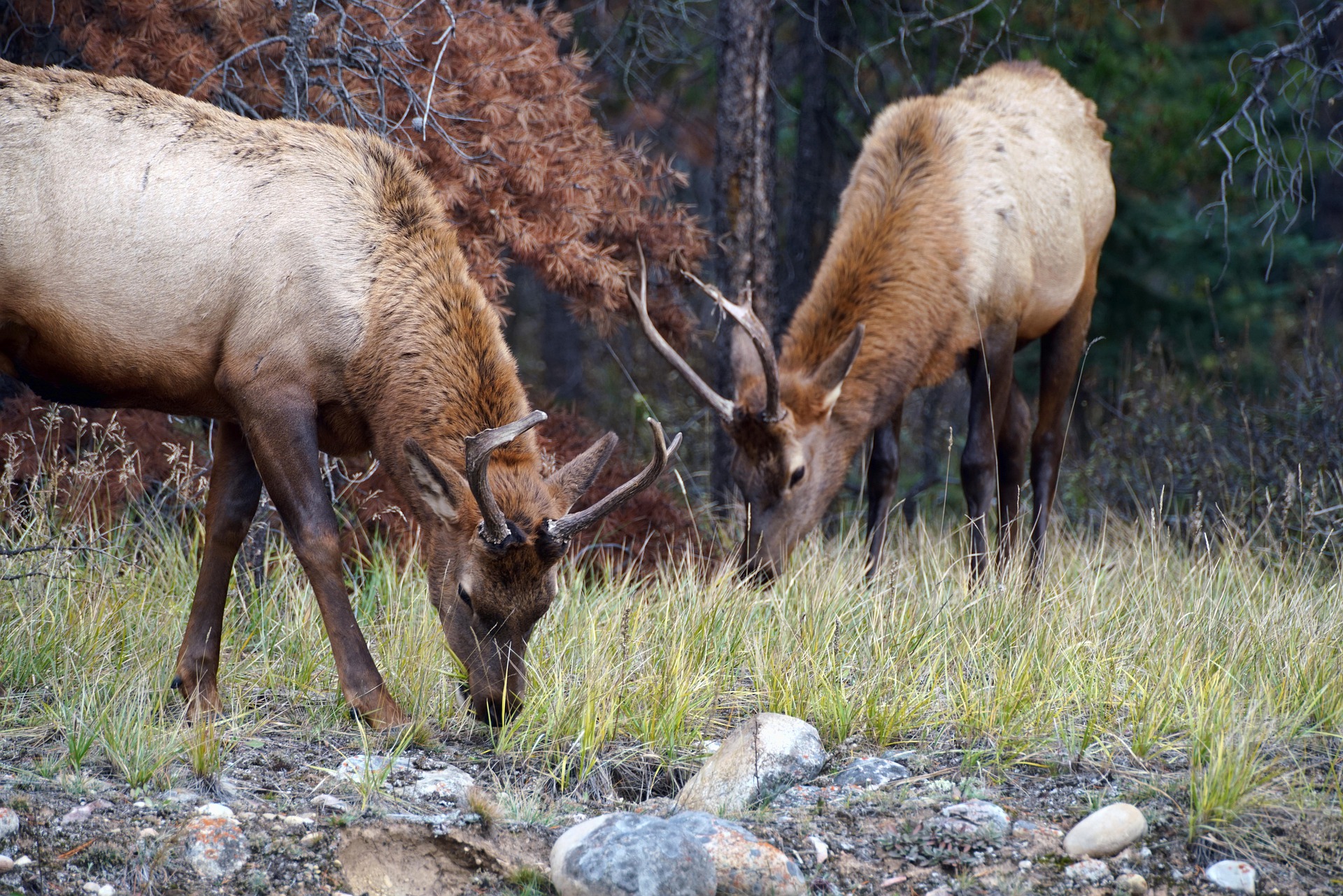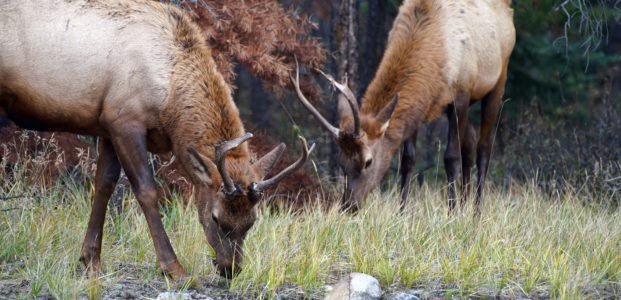Introduction
Populations of Woodland Caribou are found across Canada. In Saskatchewan they are found in the upper half of the province. Not only does this species reflect the ecological health of an area, but they are also culturally and historically significant to Indigenous Peoples. This blog post will outline the current status of legal protections for Woodland Caribou in Saskatchewan.
In 2003, the Woodland Caribou, Boreal population (Woodland Caribou) was listed as “threatened” under the Government of Canada’s species at risk legislation, the Species at Risk Act (“SARA”). In 2013 the Government of Saskatchewan initiated its “Woodland Caribou Range Assessment and Range Planning” program which included four different geographical units based on the province’s Woodland Caribou ranges. The four units include the SK1 Boreal Shield, SK2 Central, SK2 West, and SK2 East. For each unit there is a separate range plan.
SARA came into force in 2003 with the purpose of protecting wildlife species. Specifically, section 6 of SARA states:
The purposes of [SARA] are to prevent wildlife species from being extirpated or becoming extinct, to provide for the recovery of wildlife species that are extirpated, endangered or threatened as a result of human activity and to manage species of special concern to prevent them from becoming endangered or threatened.
SARA is an important tool which supports Canada’s biological diversity conservation and protection goals. These include Canada’s commitments under international agreements and conventions, such as the United Nations Convention on Biological Diversity.
SARA is federal legislation that applies with greatest force to areas that fall directly under federal jurisdiction, including land owned by the federal government, Canada’s internal waters and territorial sea, and land reserved for First Nations. SARA also empowers the Governor in Council to make emergency orders to protect the critical habitat of species at risk on provincial and territorial lands where this is deemed necessary for their survival or recovery. However, Canada’s approach to the protection of species at risk places emphasis on cooperation and coordination between federal, provincial, and territorial levels of government. While the Government of Saskatchewan seeks to address species at risk through parallel provincial legislation, the Wildlife Act, 1998, it does not have a legislated mechanism for the identification and protection of critical habitat for species at risk and it works cooperatively with the federal government in the preparation of recovery plans for federally listed species.
How Does a Species Become Listed?
Under SARA, the Committee on the Status of Endangered Wildlife in Canada (“COSEWIC”) was established. COSEWIC is an independent committee comprised of wildlife experts from a variety of institutions that is tasked with assessing existing or potential threats to wildlife species. If a threat is established, COSEWIC categorizes the threatened species asa status of extinct, extirpated, endangered, threatened, or “of special concern” and provides their assessment of each species to the Minister and the Canadian Endangered Species Conservation Council.”
Upon receiving the COSEWIC’s recommendations the Minister reviews the assessment and makes a recommendation to the Governor in Council who has the discretion to determine if a species should be listed under SARA’s Schedule 1, which is the official list of species at risk, as well as the specific status assigned to the species. Once a species is listed under Schedule 1 as extirpated, endangered, threatened, or of special concern by the federal government, there are protections imposed by SARA for each status. If the species is listed as endangered, threatened, or extirpated then the federal government must also prepare a recovery strategy for the species.
Woodland Caribou, Boreal Population, SARA Listing
The Woodland Caribou, Boreal population, was identified as “threatened” by COSEWIC in 2000 and in 2003 the federal government added the species to Schedule 1 of SARA with this status. The Woodland Caribou, Boreal population, includes 51 subpopulations, all of which indicate negative population growth rates. While some subpopulations are worse off, such as those in Alberta, northeastern British Columbia, and Labrador, COSEWIC estimates an overall decline in population of over 30% in the near term. The decline in population is largely attributed to increased predation and habitat loss, from natural disturbances such as fires and anthropogenic disturbances from natural resource extraction.
Caribou Recovery Strategy
In response to its SARA listing, the federal government developed the “Recovery Strategy for the Woodland Caribou Boreal Population in Canada” (the “Recovery Strategy”), which was released in 2012 and set forth the efforts required to recover the Woodland Caribou population in Canada. The Recovery Strategy calls for a coordinated approach between the federal government and provincial and territorial jurisdictions. Recovery plans called range plans are to be developed by the provincial and territorial jurisdictions for their respective boreal caribou conservation units. This is a provincial and territorial responsibility as they are responsible for land and wildlife management with respect to most land falling within their boundaries. Each range plan must “guide protection and management of critical habitat, and overall recovery actions, in each boreal caribou range.”
Saskatchewan’s Woodland Caribou Range Assessment and Planning Program
In 2013, the Government of Saskatchewan released the “Woodland Caribou Range Assessment and Range Planning in Saskatchewan” program (the “Range Assessment Program”) in response to the federal Recovery Strategy. This program incorporates a range assessment and the development of range plans. Its purpose is to “assess the current state of a species range, population status and habitat availability” to assist in planning and decision making. Each conversation unit, the SK1 Boreal Shield and the SK2 Boreal Plain, will have its own range plan. The Boreal Plain unit is further divided into SK2 Central, SK2 West, and SK2 East. To date only the SK2 Central and a draft of the SK2 West range plans have been released.
In developing the Range Assessment Program, the Government of Saskatchewan is engaging with universities, industry, First Nations, and Métis. Ultimately, the Range Assessment Program “will guide how to restore damaged caribou habitat” as the restoration of their habitat is crucial to species recovery.
Of the two range plans that have been released, both draw attention to the following five primary management strategies to address landscape disturbance: “avoidance; reclamation and restoration; mitigation offsets for new disturbances; forest harvest patterns; and, access management.”
The range plans also highlight the importance of landscape management goals “which can provide suitable habitat condition to support the recovery and long-term sustainability of the woodland caribou population across the provincial range.” Landscape management is a management approach that analyzes “landscape features which cause resistance to movement” which in turn are correlated to Woodland Caribou population health. The landscape management goals under the SK2 Central range plan are to:
- Reduce the amount of human-caused disturbance;
- Maintain greater than or equal to 80 per cent of high potential woodland caribou habitat in a condition unaffected by direct and/or indirect human-caused disturbance;
- Maintain adequate connectivity between different areas of SK2 Central and adjacent caribou administration units;
- Increase forest harvest event sizes to more closely emulate natural forest patterns; and,
- Decrease the total amount of non-permanent linear features.
The landscape management goals for the SK2 West range plan are largely the same.
Range Program Status
Currently there are two outstanding range plans, for SK2 East and SK1, which had a target release date of March 2020 and October 2020, respectively; however, the Government of Saskatchewan has confirmed their expected release has been postponed to 2021.
The province is currently conducting research to provide information on Woodland Caribou populations. Data for the SK2 Central range plan was collected from 2017-2019 and the research for the SK2 West and SK2 East range plans began in 2020 and will conclude in 2022. Given that the range plans were only released in 2019 or have yet to be released, it is fair to assume the population research is unlikely to show the effect of the management strategies included in the range plans.
In summary, Woodland Caribou populations in Saskatchewan are declining due to anthropogenic disturbances that often exacerbate habitat loss and natural processes like predation. While progress has been made on the development of recovery plans through the development of range plans, there are still several outstanding items, including the SK2 East and SK1 range plans and population studies, to fully understand if the Woodland Caribou population is moving towards recovery. To fulfill its conservation goals the Government of Saskatchewan should prioritize completing the SK2 East and SK1 range plans and population studies to ensure proper protection of the province’s Woodland Caribou populations.


